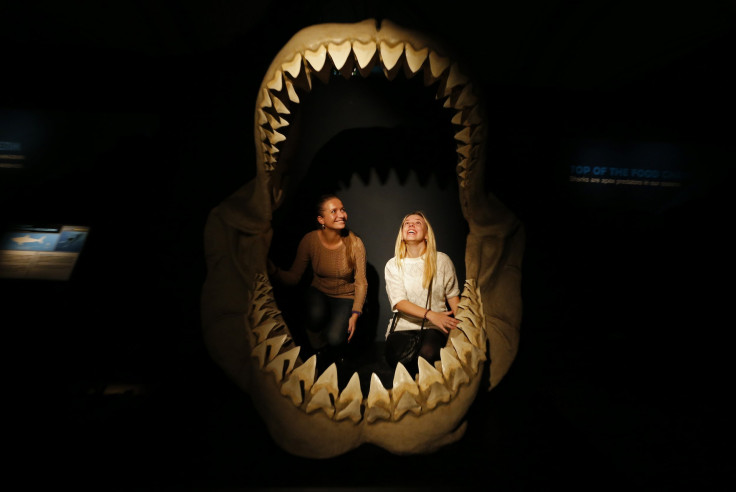'Extinction event' defeated the Megalodon, world’s largest shark; Scientists believe sea level change caused sudden disappearance

Researchers at the University of Zurich may finally have an answer to the mysterious disappearance of the Megalodon, which was once the world’s biggest shark, at least three times the size of a Great White. The gigantic beast measured up to 60 feet in length and had razor-sharp teeth, each measuring at least six inches.
The largest shark of all time, discovered up to now, fed on whales. No predator of the sea could match it. The Megalodon disappeared mysteriously about two to three million years ago. Up to now, scientists have provided various explanations as to why it suddenly disappeared. New predators, a decline in prey and climate change all seemed to have played a part in their extinction. The researchers found that the Megalodon was not the only creature to disappear during the period mentioned, which was known as Pliocene Epoch.
The study states a third of the ocean’s largest marine animals, including sea turtles, sea birds, whales and sharks died during this time period. It was an “extinction event” unknown to scientists up to now.
Lead author Dr. Catalina Pimiento told The Times that a third of the marine megafauna simply disappeared around two to three million years ago. The team of researchers studied and analysed fossils of such marine megafauna from Pliocene and Pleistocene epochs (5.3 million to around 9,700 years BC).
The mass extinction event adversely affected marine mammals the most. Around 55 percent of the total diversity was lost. Nine percent of the sharks, 35 percent of the sea birds and 43 percent of sea turtles species were lost. Thus, what humans inherited as marine megafaunal communities, were functioning at a diminished diversity and were already altered.
Exactly what caused this mass extinction event is still unknown. One big possible explanation could be the rapidly altering sea levels due to dramatic formation of glaciers.
The scientists now believe that sea level had a lot to do with the extinction. As a result of sea level change, coastal areas rapidly declined and oscillated as well. This in turn affected all the big animals.
According to Dr. Pimiento, the study has demonstrated that warm-blooded animals face the largest threat of extinction. She believes this research will help marine biologists understand the threats that the big animals face. The study also shows how marine megafauna were far more vulnerable to global environment changes than previously assumed.





















